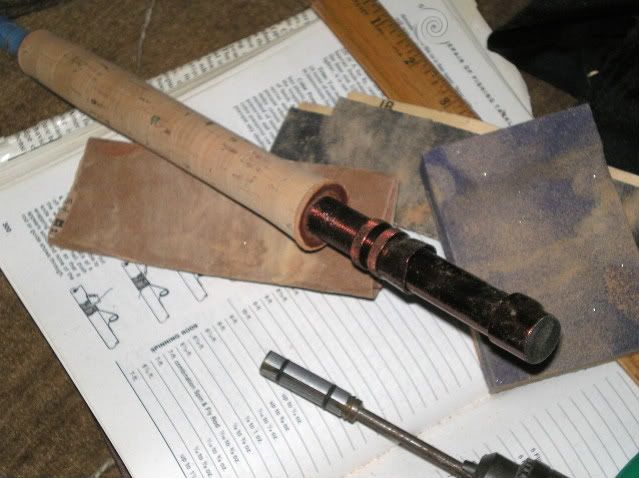whrlpool wrote:
I just glue up rings and turn to shape on the blank, so your set up is much less "crude" and I'm not sure of all the fine tuning options using a mandrel. Later on, though, if a grip just needs a tweak, hand turning will do that.
As far as hand tuning on the blank that is no problem. In fact you tan turn the whole grip by hand on the blank if you want to.
Sit in a chair outside, use your thighs as a platform to hold and roll the blank. Progress with your sanding (I go up to 400 grit). It takes about 15 minutes.
I like it because I sit outside and let the dust drop in the air, and is pretty relaxing, creating the shape and feel that you want.
As mentioned earlier, the rod dictates the shape at times. I have thinned some grips this way that felt too heavy in hand, then shaved off more and got it just right. Changed the whole rod feel.










